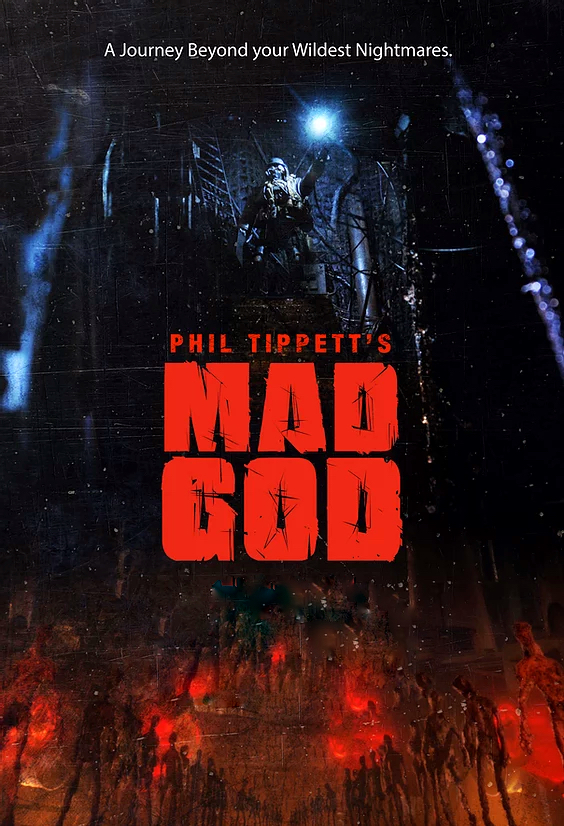Fantasia Review: ‘Mad God’ is a Nightmarish Stop Motion Masterpiece


Starring Alex Cox, Niketa Roman, Satish Ratakonda
Written by Phil Tippett
Directed by Phil Tippett
There aren’t a lot of cinematic experiences to compare to Phil Tippett’s long-gestating stop-motion epic Mad God. At this year’s Fantasia International Film Festival, only Takahide Hori’s stop-motion sci-fi adventure Junk Head comes close. A passion project decades in the making, if it’s not a masterpiece, it’s certainly a masterwork. Tippett’s mad hatter energy and incomparable ingenuity are in full bloom here, reaching a pinnacle of artistry that began way back in 1977 with the legendary animator’s work on Star Wars.
With no traditional story per sé, Mad God is more like a cinematic odyssey that places you in a dreamlike state of wonder and bewilderment. It takes you on a long journey over its relatively short running time that’s disorienting, disgusting, and downright dangerous.
Mad God is a combination and expansion of two lengthy short films that first surfaced about ten years ago. The story follows The Assassin through a twisted, underground maze of treacherous factories, abhorrent hospitals, monstrous lairs, and enchanted tombs. Armed with only a mysterious map, The Assassin witnesses a cruel but exciting universe that seems to be in a constant state of decay and rebirth.
Related: Godzilla Stands With The LGBTQ+ Community In Delightful New Stop Motion Video
Witches, wizards, nurses, surgeons, zombies, gnomes, and even caged monkeys fill this strange world. There are blubberous war pigs, flatulent shit-spraying monstrosities, and mummified automatons waiting to be extinguished and redeployed. There’s a never-ending cacophony on display for The Assassin to make his way through. For all of its desire to disgust, the horror of the Mad God landscape actually starts to resemble a sort of macabre opera. It’s a brilliantly choreographed ballet brought to you by the minds (and hands) of the Phil Tippett Studio Dance Company.

This film is sheer artistry coming to life. The wabi-sabi ugliness of the film becomes beautiful, like waking up to a sunrise after a particularly disturbing nightmare. This is exemplified when a bloody autopsy turns into a birthing scene. As a crying baby is placed into the arms of a dark alchemist, its cries mix with willowing, ethereal music. The sounds and images are both nerve-racking and calming, which lulls the viewer into a strange state. That feeling is exactly how Tippett and his cohorts want you to feel throughout the film.
Classical and percussive music from mostly German composers also keeps you on edge sonically. Orchestral pieces like “Requiem, Op. 5” by Berlioz and a haunting xylophone work called “Gassenhauer” add a timeless quality.
Through the music and stop-motion effects, Tippett is celebrating art through the ages. It all comes together to show us something we’ve never quite seen before.
Related: REBOOTED Review – A Film About A Stop-Motion Skeleton That Will Make You Cry
Everyone who worked on Mad God deserves recognition. Although Tippett Studio is a relatively small team, the puppeteers, compositors, animators, and set builders worked feverishly on this for years. The stagecraft is awe-inspiring and Tippett would be the first one to champion their efforts. This may come solely from the dark crevices of his imagination but bringing this vision into reality took a staggering amount of human hours with very tired but steady hands.
From the late twentieth century into the early 21st century, film fans have witnessed a seismic shift in visual effects work. Tippett Studio takes all of that history into account and even goes back to when seminal films like King Kong wowed crowds. (Ray Harryhausen and Jan Švankmajer would and should be proud.) The grand spectacle of Mad God still feels immediate and intimate in a way that only stop-motion techniques can convey.
Amazingly, for audiences that have seen dinosaurs come to life on screen, small visual miracles like the unnatural-looking flow of clothing or the ticking of a clock still make Mad God just as riveting. Watching this kind of next-level stop-motion work is hypnotic.
Mad God can be summed up in a quote by Tippett himself: “If you can’t keep up with the times, you’re left behind, or worse, go extinct.”
-
Mad God
Summary
A passion project decades in the making, if Mad God is not a masterpiece, it’s certainly a masterwork.

